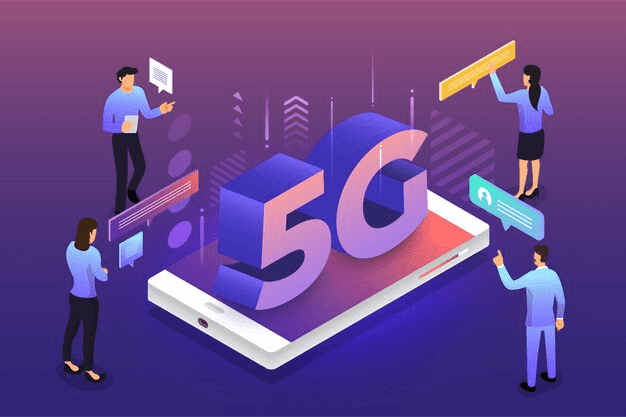Creating Ultra-Low Latency Applications with 5G Software
The advent of 5G technology has ushered in a transformative era in the world of connectivity, enabling unprecedented opportunities for developers and businesses alike. As you dive into the development of ultra-low latency applications, 5G software becomes a cornerstone, revolutionizing how data is transmitted, processed, and consumed. This guide will provide actionable insights to help you design and optimize your applications for the 5G landscape, ensuring seamless performance and unparalleled user experiences.
Why 5G Is a Game-Changer for Low Latency
5G networks are designed to deliver blazing-fast speeds,
massive bandwidth, and, most importantly, ultra-low latency. Latency, the time
it takes for data to travel from the source to the destination and back, is
critical in applications such as gaming, augmented reality (AR), virtual
reality (VR), telemedicine, and autonomous vehicles.
With 5G, latency is reduced to as low as 1 millisecond,
compared to 30–50 milliseconds with 4G. This leap empowers developers like you
to create real-time experiences that were once deemed impossible.
Key Features of 5G for Ultra-Low Latency Applications
Network Slicing
5G enables network slicing, which allows you to create virtual
networks tailored to specific application requirements. You can allocate a
dedicated slice for low-latency applications, ensuring minimal interference and
optimized performance.
Actionable Tip: Work closely with telecom providers
to understand how network slicing can be integrated into your application’s
architecture.
Edge Computing
The proximity of edge servers in 5G networks reduces the distance data must travel, cutting down on latency.Actionable Tip: Leverage edge computing platforms to
process data locally, minimizing delays and enhancing responsiveness.
Click this link here now to explore platforms offering edge computing
solutions.
Massive IoT Connectivity
5G’s ability to connect a vast number of devices simultaneously ensures that your applications can handle high device densities without compromising performance.Actionable Tip: Optimize your applications to manage
simultaneous connections effectively, ensuring scalability for IoT ecosystems.
Steps to Create Ultra-Low Latency Applications
Define Application Use Cases
Before you begin, identify the specific use cases that
demand ultra-low latency. Whether it’s real-time analytics, gaming, or live
streaming, a clear understanding of user requirements will guide your
development process.
Design for Edge Integration
Incorporate edge computing from the ground up. This involves
designing your application to offload computation tasks to edge servers rather
than central data centers.
Practical Tip: Use APIs and SDKs provided by edge
computing providers to streamline integration. Check over here for tools to get
started with edge-based development.
Optimize Data Transmission
Efficient data transmission is crucial for reducing latency.
Use lightweight data formats, minimize payload sizes, and implement advanced
compression algorithms.
Practical Tip: Utilize the QUIC protocol, which is
optimized for low-latency connections, over traditional TCP/IP protocols.
Implement AI-Powered Predictive Algorithms
Artificial intelligence (AI) can predict user behavior and
pre-load data, reducing the need for real-time requests.
Practical Tip: Integrate machine learning models into
your application to anticipate user actions and enhance responsiveness.
Test and Monitor Latency Metrics
Thorough testing is essential to ensure your application
meets low-latency benchmarks. Use tools like Wireshark or PingPlotter to
measure network performance and identify bottlenecks.
Practical Tip: Set up automated monitoring
systems to continuously track latency and adjust configurations as needed.
Challenges and Solutions in 5G Application Development
Challenge 1: Network Variability
5G networks, while robust, can experience variability due to
factors such as user density or infrastructure limitations.
Solution: Employ dynamic load balancing and
redundancy mechanisms to maintain performance during fluctuations.
Challenge 2: Security Risks
The increased connectivity in 5G networks can amplify
security risks.
Solution: Implement end-to-end encryption, secure
authentication protocols, and regular vulnerability assessments to safeguard
your application.
Challenge 3: Integration Complexity
Integrating 5G features such as network slicing and edge
computing into existing systems can be complex.
Solution: Partner with experts or leverage managed
services that simplify the integration process.
Real-World Applications of Ultra-Low Latency in 5G
·
Autonomous Vehicles: Ultra-low latency is
critical for real-time communication between vehicles and infrastructure,
ensuring safety and efficiency.
·
Telemedicine: 5G-enabled applications
allow for real-time remote surgeries and diagnostics, transforming healthcare
delivery.
·
Augmented and Virtual Reality: Seamless
AR and VR experiences require low latency to eliminate motion lag and enhance
user engagement.
Actionable Tip: Explore the potential of AR/VR in
your industry and identify opportunities for innovation.
Best Practices for Optimizing 5G Applications
Prioritize User-Centric Design: Focus on delivering a
seamless and intuitive user experience, especially for latency-sensitive tasks.
Leverage 5G-Specific SDKs: Many telecom providers
offer SDKs optimized for 5G environments. Incorporate these tools to streamline
development.
Adopt Agile Development: Use an agile methodology to
quickly iterate and optimize your application based on user feedback and
performance data.
Future Trends in 5G and Low Latency Applications
·
Holographic Communication: The rise of
holographic calls and interactions will demand ultra-low latency for lifelike
experiences.
·
Digital Twins: Digital twins, or virtual
replicas of physical entities, will rely on real-time data for accurate
simulations.
·
5G in Smart Cities: From traffic
management to public safety, 5G will enable smart cities to function more
efficiently.
Actionable Tip: Stay ahead of the curve by keeping an
eye on emerging trends and incorporating innovative features into your
applications.
Conclusion
Creating ultra-low latency applications with 5G software
opens the door to groundbreaking possibilities across industries. By leveraging
key features like edge computing, network slicing, and IoT connectivity, you
can design applications that redefine user experiences. Stay proactive, address
challenges head-on, and continually optimize your solutions for the evolving 5G
landscape.
Ready to transform your vision into reality? Find out more about tools and
resources that can accelerate your journey in 5G application development.




Comments
Post a Comment